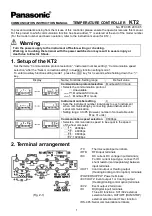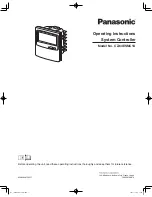
2 4
DRAWMER
Cut It Out...
Using the left and right cut switches will highlight the stereo balance of each
channel. In stereo the mix sounds ok, however, it may be that you want an instrument
to be panned so far left that it doesn’t occur at all in the right channel, by cutting the
left and only hearing the right channel you will hear whether the instrument bleeds
across, and panning adjustment can be made.
Phase Reverse
Make use of the phase reverse switch. If the sound doesn't become less focused
when the polarity is flipped then there is something wrong somewhere. Not only
will the switch help confirm that the monitor speakers are wired up in the correct
polarity, phase inversion on a particular instrument can at times improve the way
the instrument interacts with the rest of the mix by removing the phase cancellation.
Monogising
Check your mix in mono - often! Just because a mix sounds good in stereo doesn't
mean it will sound good when the channels are combined. Why should you care if
your mix sounds good in mono? Well, most live music venues and dance club
sound systems are mono - running the PA or sound system in mono is common
practice to ensure music sounds good everywhere in the room because it removes
the ‘sweet spot’ and the complex phase issues of stereo. Note that if you press
‘mono’ in the
surround section
of
‘Source Select’
(1)
ALL 8 channels of the surround
speakers will output the mono signal - emulating a nightclub impressively.
In many cases the low frequencies will be put through a crossover and summed to
mono before being sent to the sub. Monogising is also necessary when testing the
audio for use on nonstandard applications such as for broadcast or mobile phone.
In addition, monogising will highlight phase problems. In some cases, when you
activate the Mono switch you may hear comb-filtering, which will colour the sound of
your mix and cause peaks and dips in its frequency response. When a stereo mix is
combined into mono any elements that are out of phase will drop in level or may
even disappear completely. This could be because left and right outputs are wired
out of phase but its more likely to be due to phase cancellation.
What causes phase cancellation?
Many stereo widening effects and techniques, such as chorus;
Simultaneous direct box and mic recording - If you've ever recorded a guitar
simultaneously through a direct box and a microphone, you may have noticed
the time alignment problems this causes. This type of situation can often be
fixed by careful mic placement, or realigning the waveform in a DAW;





































